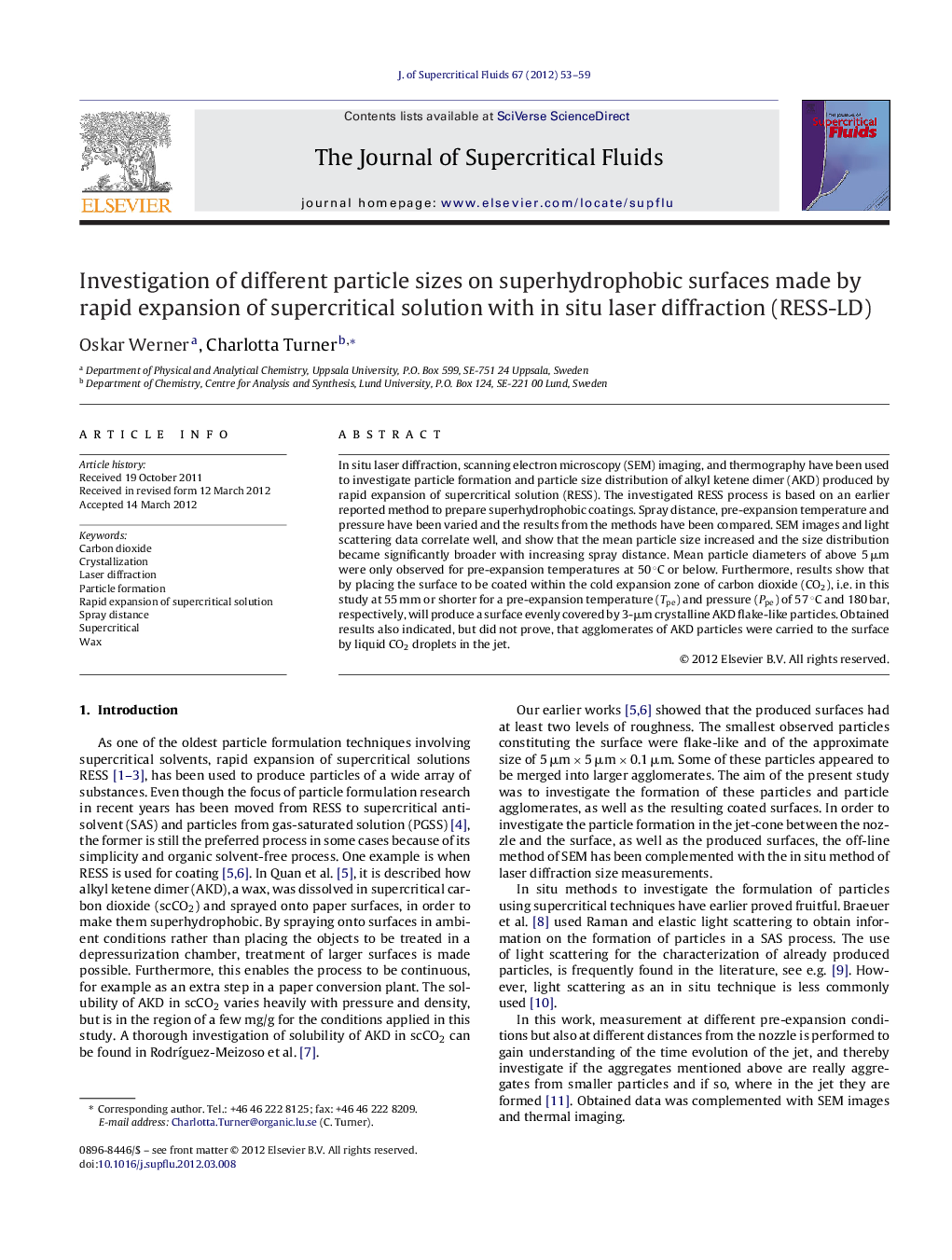| Article ID | Journal | Published Year | Pages | File Type |
|---|---|---|---|---|
| 231017 | The Journal of Supercritical Fluids | 2012 | 7 Pages |
In situ laser diffraction, scanning electron microscopy (SEM) imaging, and thermography have been used to investigate particle formation and particle size distribution of alkyl ketene dimer (AKD) produced by rapid expansion of supercritical solution (RESS). The investigated RESS process is based on an earlier reported method to prepare superhydrophobic coatings. Spray distance, pre-expansion temperature and pressure have been varied and the results from the methods have been compared. SEM images and light scattering data correlate well, and show that the mean particle size increased and the size distribution became significantly broader with increasing spray distance. Mean particle diameters of above 5 μm were only observed for pre-expansion temperatures at 50 °C or below. Furthermore, results show that by placing the surface to be coated within the cold expansion zone of carbon dioxide (CO2), i.e. in this study at 55 mm or shorter for a pre-expansion temperature (Tpe) and pressure (Ppe) of 57 °C and 180 bar, respectively, will produce a surface evenly covered by 3-μm crystalline AKD flake-like particles. Obtained results also indicated, but did not prove, that agglomerates of AKD particles were carried to the surface by liquid CO2 droplets in the jet.
Graphical abstractFigure optionsDownload full-size imageDownload as PowerPoint slideHighlights► RESS with in situ laser diffraction gives particle size distribution from the spray. ► Thermography gives temperature profile of the jet. ► Light scattering data correlate well with SEM images from the same spray distances. ► Liquid CO2 droplets in the spray enabled coating of surface with particles.
